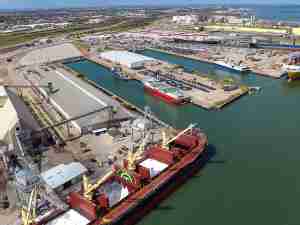The Commission’s approval, which authorizes a design-build contracting process that will accelerate the start of construction, is the final governmental clearance needed for the project.
“The new bridge will be an iconic structure for Long Beach that modernizes the Port and puts thousands of people to work over the 5-year building period,” said Long Beach Mayor Bob Foster. “It is precisely the right project at the right time for California.”
On Friday, the Port is planning to issue a solicitation seeking design-build firms that are qualified to take on the job. Final design and preliminary construction will begin in early 2011 and construction of the main bridge supports could start in 2012.
“The Transportation Commission’s approval is a major milestone for this project,” said Nick Sramek, President of the Long Beach Board of Harbor Commissioners. “It allows us to embark upon one of the biggest construction projects in the state and to replace an obsolete bridge with a new one built to handle the traffic and cargo needs of the region.”
Of the $950 million needed for the bridge, $500 million will come from state highway and transportation bond funds. Federal sources are expected to contribute about $300 million. The Port of Long Beach has pledged $114 million and Los Angeles County Metro is providing $28 million.
The Gerald Desmond Bridge is a vital route for trucked cargo, carrying about 15 percent of the nation’s containerized goods. It is also a critical link for commuters, who make up about 75 percent of bridge traffic. Thousands of vehicles use it to travel each day between Long Beach and San Pedro, and between Orange County and western Los Angeles County.
With a higher clearance, the new bridge will allow the newest generation of green cargo ships to pass underneath. The new bridge will also feature a wider roadway for cars and trucks, improving safety and reducing traffic congestion. The project will create an average of 4,000 construction jobs per year during the five-year building period.










